Amy Wright, Ph.D., remembers watching an ocean wall teeming with life scroll by from her seat in a descending submersible off the Southern Bahamas. As the vessel stopped at its maximum depth of 3,000 feet, Wright looked down and saw the wall kept going and going.
“And all I could say to myself was, ‘Wow, I wish I could go deeper. Look at all those other things that we've never seen,’” said Wright, a Research Professor with Florida Atlantic University’s Harbor Branch Oceanographic Institute. “One of the richest places I've ever seen.”
For Wright, that strange sea life represented potential breakthroughs in human health. She’s part of a team from Harbor Branch that explores the oceans in search of organisms that might hold clues to new medicines, from antibiotics to cancer treatments.
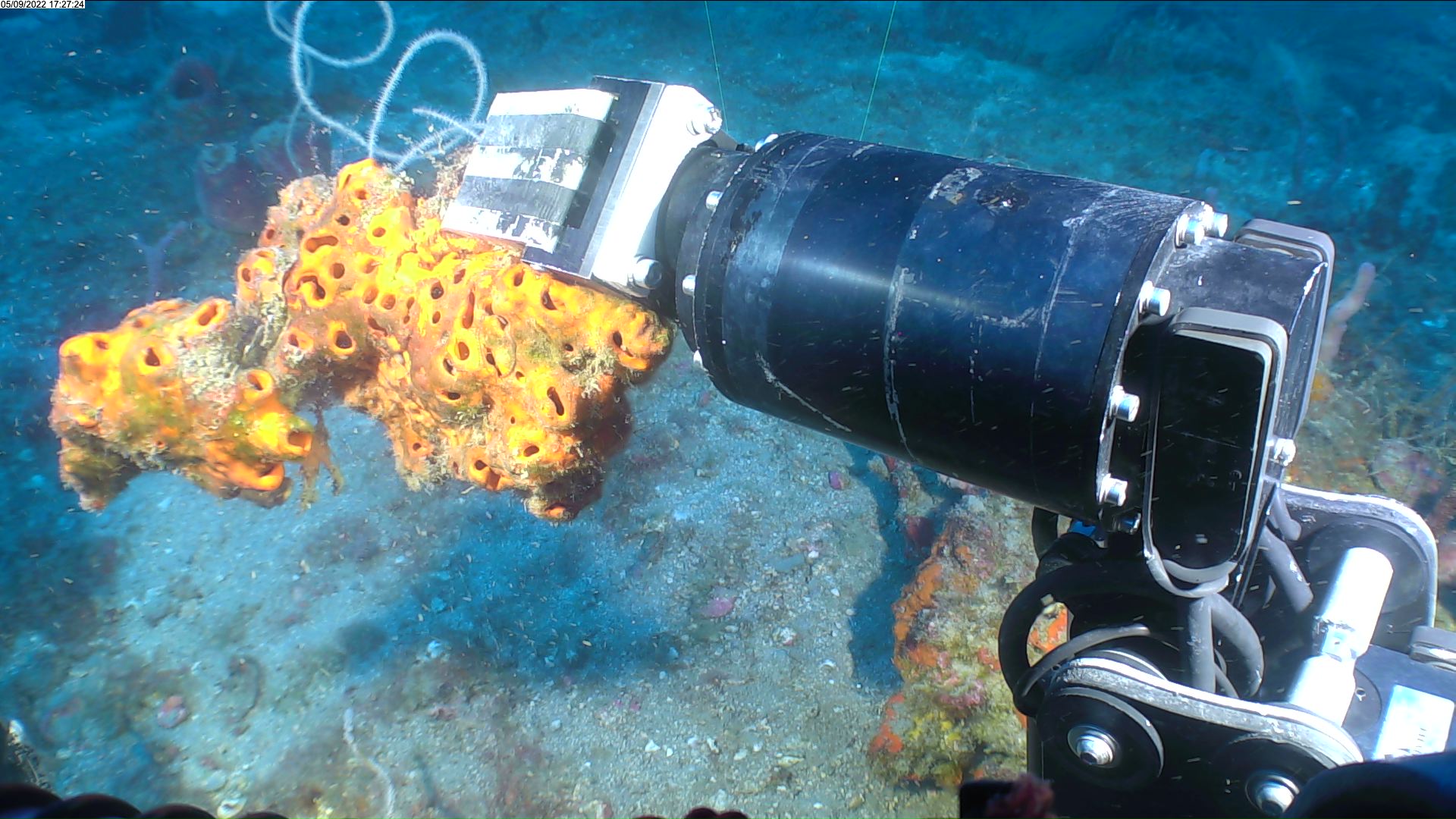
The robotic arm of the Mohawk remotely operated vehicle is used to collect organisms like this sponge from the sea floor so it can be tested for natural products. (Image credit: Exploring the Blue Economy Biotechnology Potential of Deepwater Habitats)
Sourcing medicines from nature isn’t a new idea. In fact, nearly half of the drugs today are derived from chemicals produced by plants, animals, and other organisms. Those compounds are often called natural products, and deep-sea corals and sponges are conspicuously good sources of chemicals that have been shown to be active against diseases. J. Seward Johnson Jr.—whose father, J. Seward Johnson Sr., founded Harbor Branch in 1971—established the institute’s Biomedical Marine Research program in 1984.
Diving Deeper
The Bahamas expedition that left Wright wishing to dive even deeper was one of her roughly 170 trips in the Johnson Sea Link submersibles, vessels owned and operated by Harbor Branch until the institute retired the program in 2011. Edwin Link, an inventor and one of the creators of Harbor Branch along with Johnson, designed the subs, which were built in the 1970s. Equipped with a manipulator arm and a vacuum-suction sampler, the subs made thousands of dives and countless ocean discoveries.
For example, a deep-sea sponge collected near the Bahamas on a Johnson Sea Link dive has shown strong antibacterial activity against MRSA, the drug-resistant ‘superbug’ that causes thousands of deaths per year.
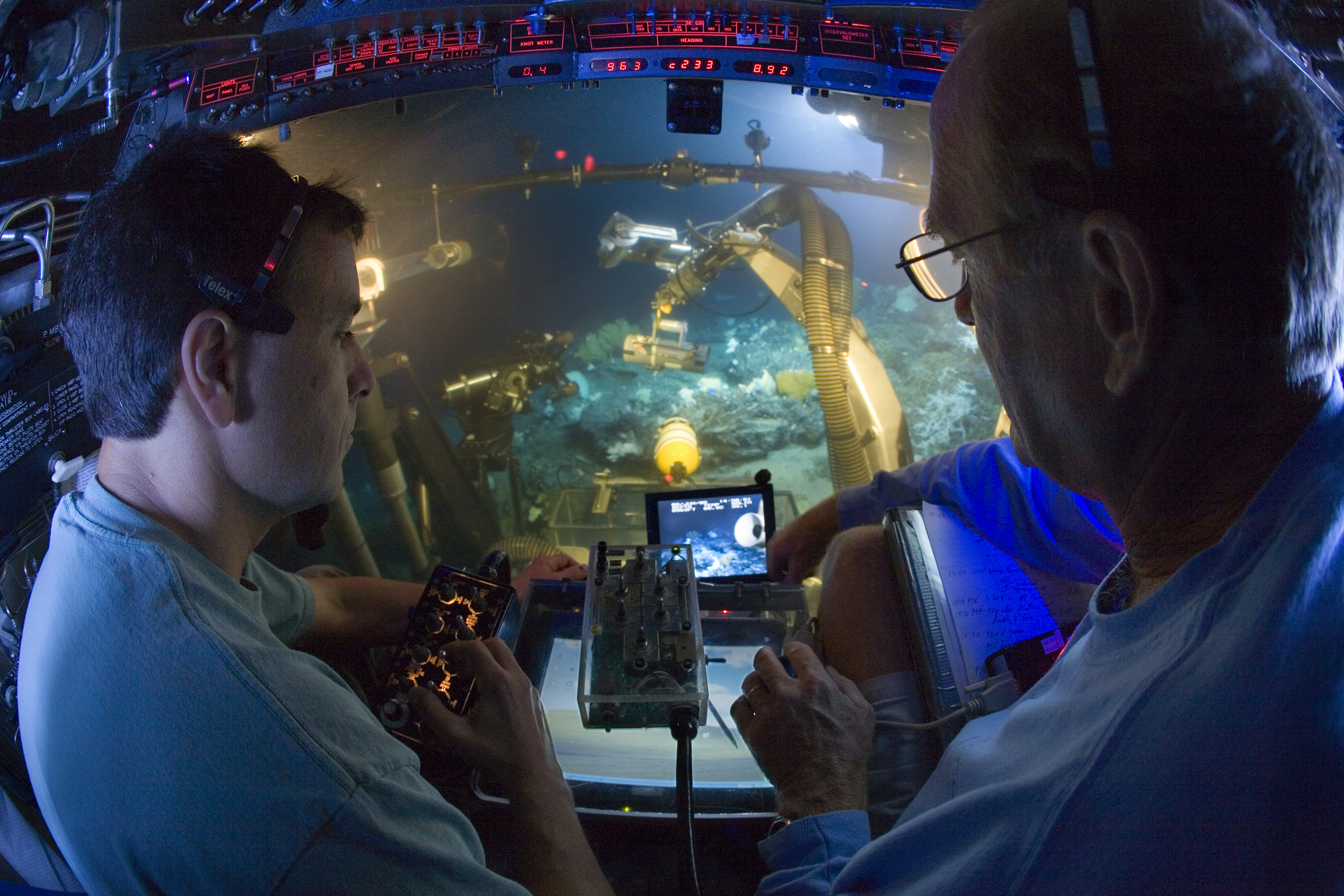
Pilot (L) and researcher in the sphere of the Johnson-Sea-Link submersible collecting samples from the deep sea. (Image credit: FAU Harbor Branch)
“It seems to me that almost anywhere you go, especially if it's a place that has some rocks and things on the bottom, there's going to be new organisms,” Wright said. “And we don't know what they'll do.”
More recently, the team has turned to remotely operated vehicles for collecting specimens. Wright joined a May 2022 expedition to the NOAA Flower Garden Banks National Marine Sanctuary in the Northeastern Gulf of Mexico. The crew gathered organisms with the Mohawk, a remotely operated vehicle (ROV) owned by the sanctuary and operated by the University of North Carolina Wilmington’s Undersea Vehicles Program.
A Source for New Medicine
A series of seamounts and ocean banks within the sanctuary support a complex ecosystem of shallow water corals to deeper mesophotic reefs. The wide diversity of species there is well documented, but this expedition focused on deeper areas that were previously unexplored and its inhabitants untested for medicinal applications.
“People think, ‘Oh, we know everything about the Flower Gardens,’” Wright said. “We found absolutely new species, and they're showing really exciting bioactivity.”
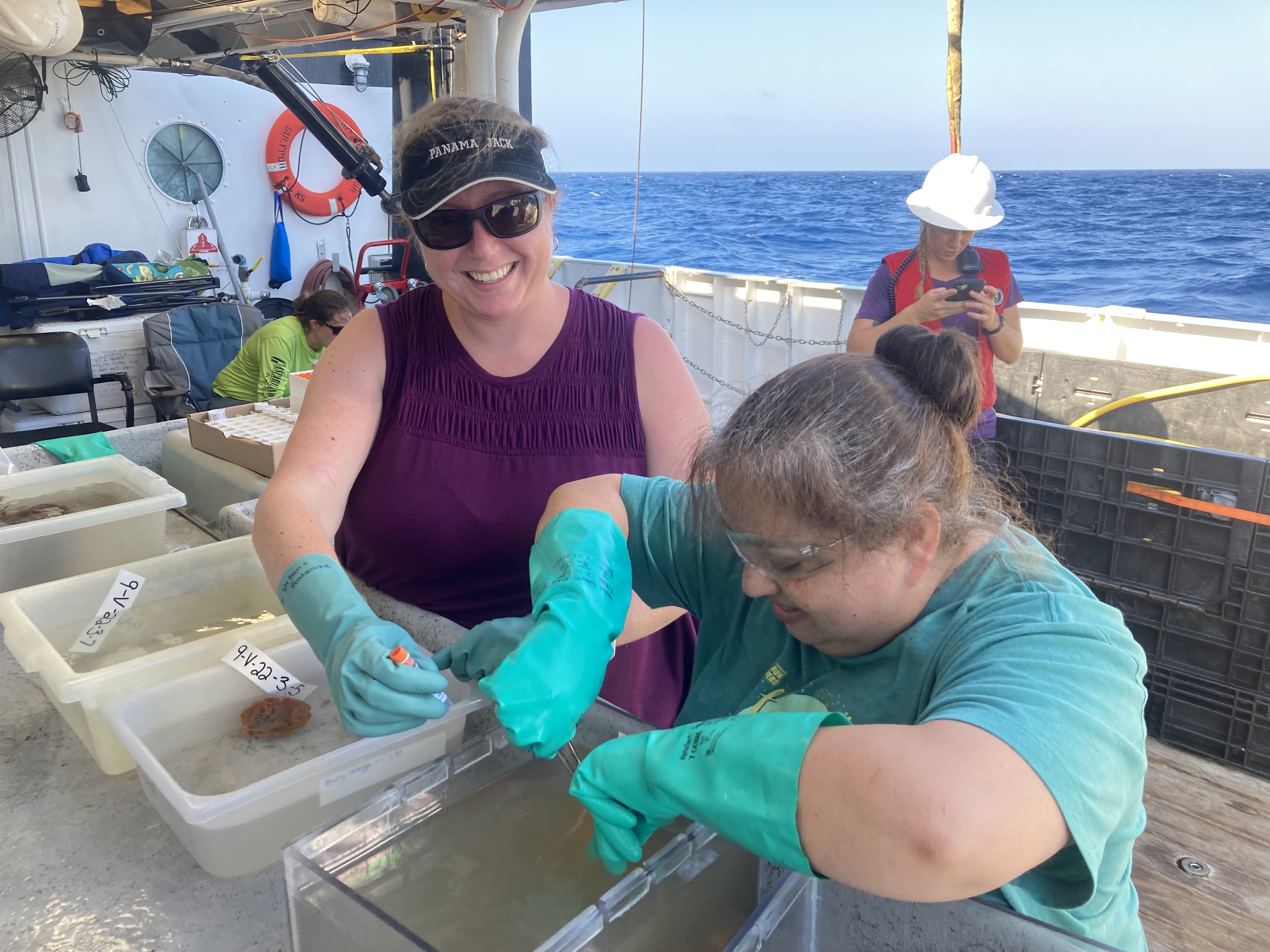
Esther Guzmán and Elizabeth Urban-Gedamke process marine invertebrate specimens collected for future DNA. (Image credit: Exploring the Blue Economy Biotechnology Potential of Deepwater Habitats)
That bioactivity is key to discovering clinical applications of newly discovered natural products. The team looks for this activity by first creating an extract from the organisms they collect by grinding a sample in ethyl alcohol and filtering off the excess tissue. The extract can be further separated into groups of chemical compounds through chromatography. Those compounds are then tested for their ability to disrupt the biological processes driving illnesses like tuberculosis, Alzheimer’s disease, and breast cancer.
At the same time, they also must ensure that any apparently beneficial bioactivity is specifically targeting the mechanisms of the disease and not just applying a broader toxicity that could also make humans sick.
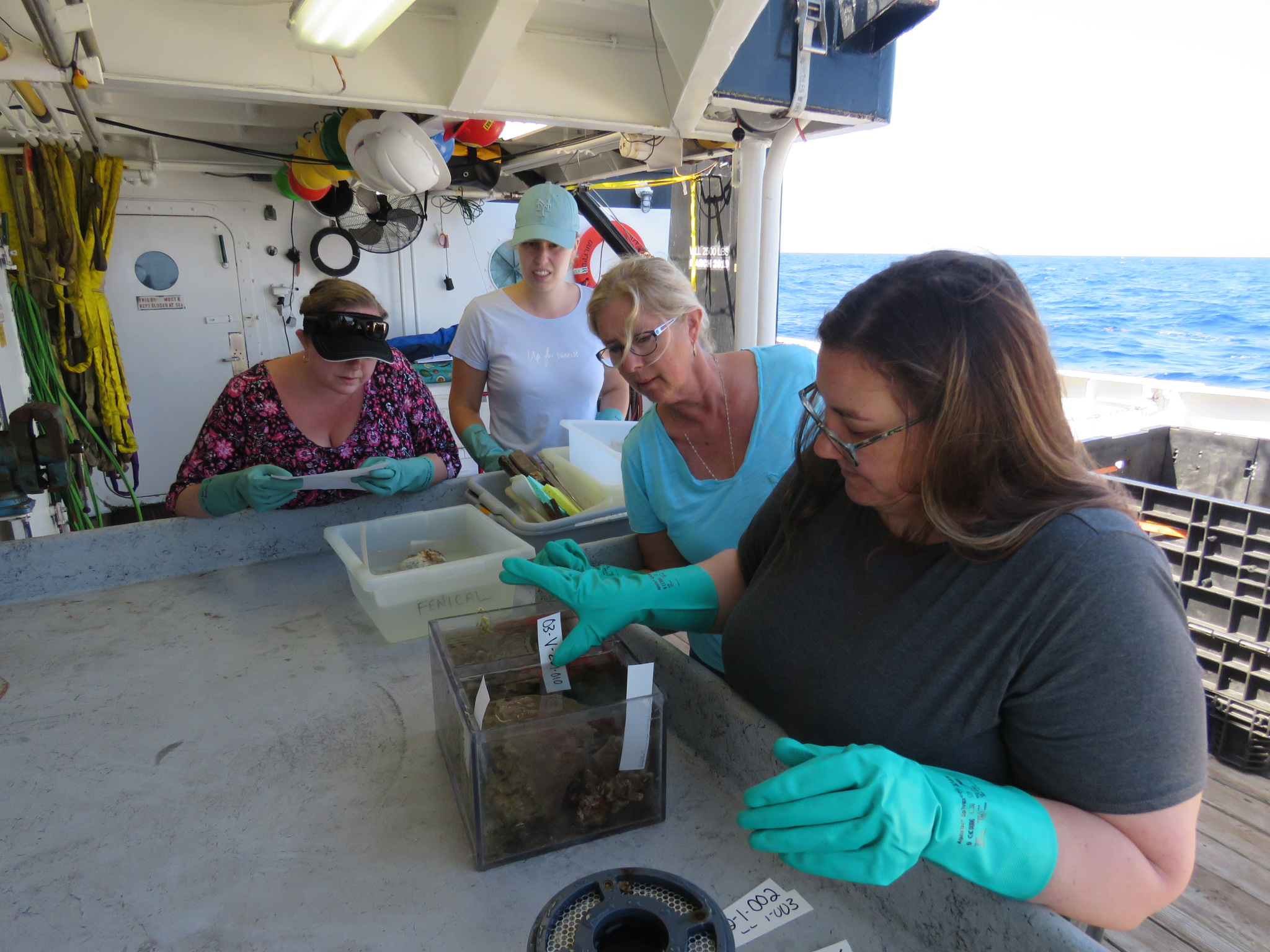
Scientists carefully organizes and labels organisms on deck so that each specimen can be matched to the undersea observations from its collection. (Image credit: Exploring the Blue Economy Biotechnology Potential of Deepwater Habitats)
For more than a decade, Harbor Branch has built and maintained a library of natural products that can be tested against diseases by scientists at the institute or partner laboratories. Many of the most promising compounds have come from deep-sea sponges, a surprising case given their perception as one of the simplest multicellular organisms.
One explanation for this abundance of active natural products could be that sponges have had to develop chemical means to ward off predators and diseases.
Adult sponges, which are attached to surfaces and can’t swim away from threats, benefit from chemicals that make them unappealing to anything that would otherwise be happy to eat them. They are also prolific filters of ocean water—a method of feeding with a side effect of exposure to potentially pathogenic bacteria.
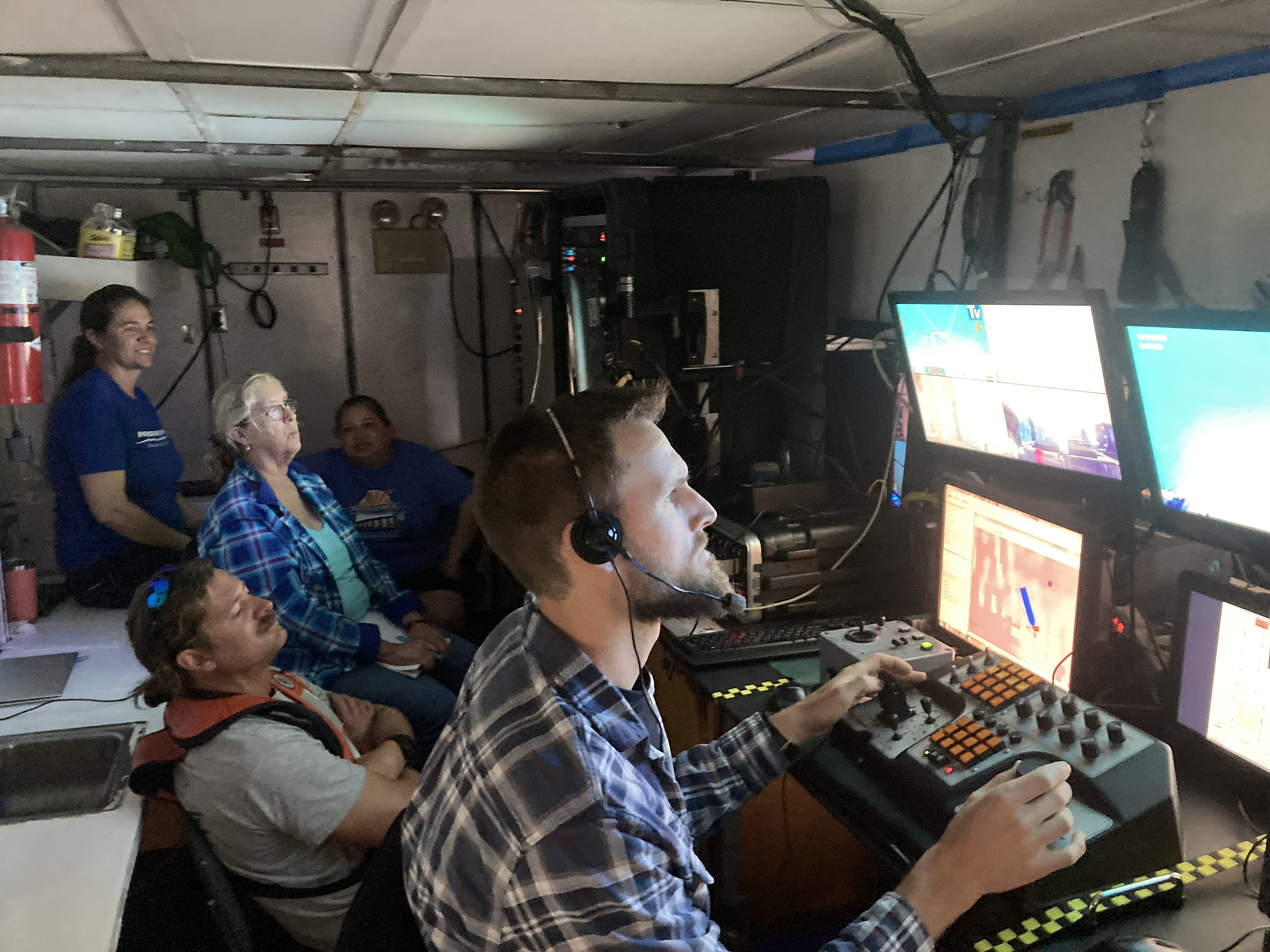
The dry lab during the successful first day of operations. (Image credit: Exploring the Blue Economy Biotechnology Potential of Deepwater Habitats)
The sponges need to protect themselves from that, so it may be their chemical defenses that are translating into natural products that are an excellent source for antibiotics. Many of these compounds are produced not only by the sponge’s own cells but also by bacteria that live within the organism in a symbiotic relationship.
“Sponges are the simplest organism—just a lot of different cell types that come together, pump water, and filter food or whatever they're getting from the water,” Wright said. “And we think that sometimes they can act as a bioreactor for various bacteria.”
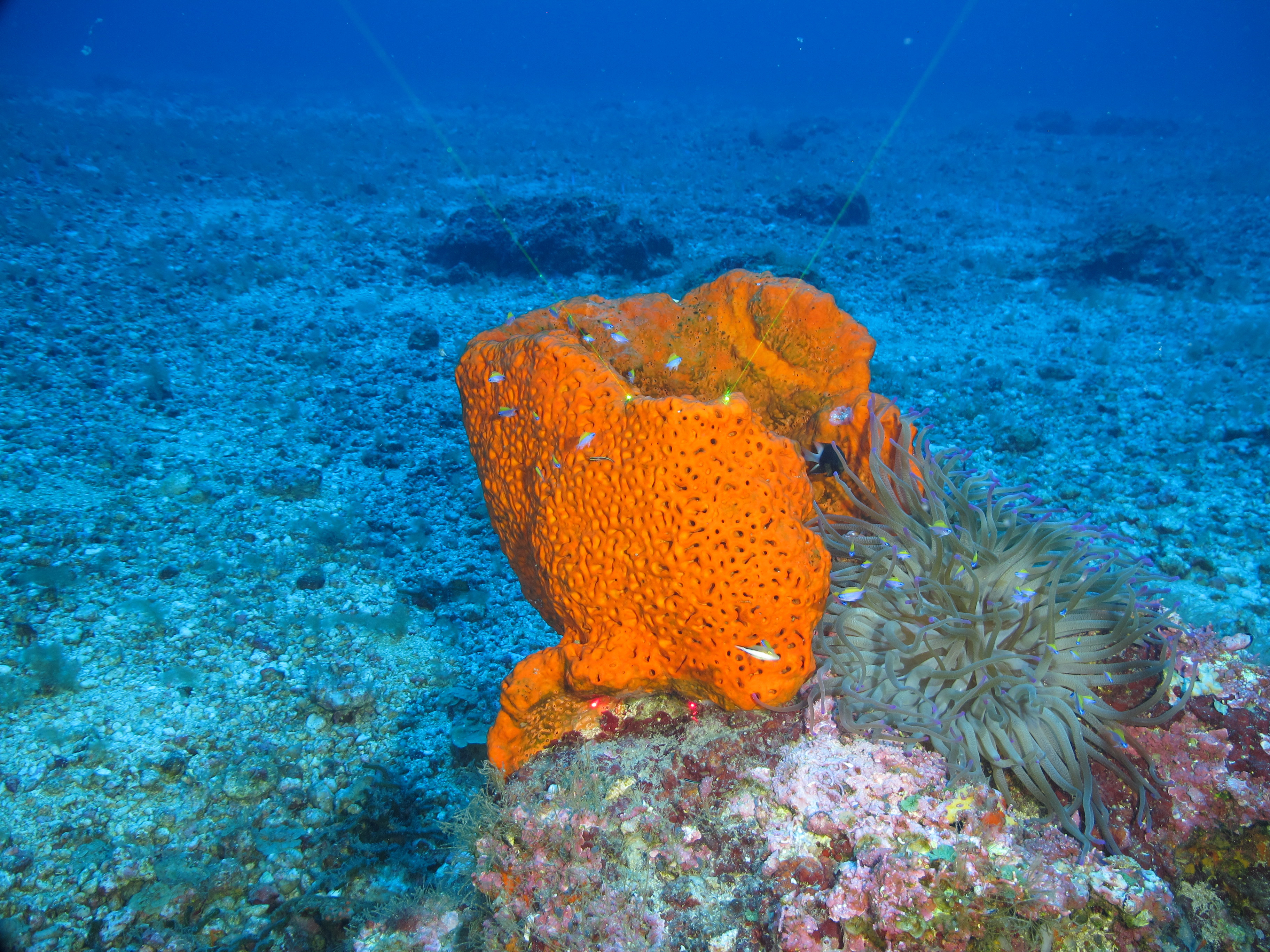
This orange sponge Agelas clathrodes was spotted alongside the anemone Condylactis gigantea. The sponge provides a habitat for reef fish and produces known natural products. (Image credit: Exploring the Blue Economy Biotechnology Potential of Deepwater Habitats)
It’s not always clear whether the natural products are produced by the sponges themselves or the bacteria they host. Either way, some of the specimens collected by the Harbor Branch program have shown the potential to help combat some of the most vexing human pathogens.
Discoveries like these put threats of pollution and climate change to ocean habitats in sharper relief and add urgency to ocean conservation efforts.
“The longevity of these resources remains unclear, so we need a time-sensitive plan of action to safeguard their preservation,” Wright said.
To learn more about the ongoing research at FAU Harbor Branch, visit: https://www.fau.edu/hboi/research/
This feature appeared in Environment, Coastal & Offshore (ECO) Magazine's 2023 Deep Dive III special edition Deep-Sea Exploration, to read more access the magazine here.





